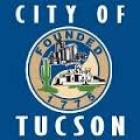Cooperative purchasing trends in 2016 – Part 1
As we head into 2016, GPN reached out to Marcheta Gillespie (photo below at right) to get her views on cooperative purchasing trends in the coming year. Gillespie is director of procurement in Tucson, Ariz. 
She has been involved in cooperative purchasing for more than 15 years, and has been in public procurement for 24 years. Gillespie’s a past president of NIGP: The Institute for Public Procurement and was on the NIGP’s board of directors for more than 10 years.
GPN: How do you see cooperative purchasing in government shaping up in 2016?
Marcheta Gillespie: Cooperative procurement has been, and will continue to be, a subject of much debate in our procurement community. I encourage procurement professionals to focus more on the strategic approach to cooperative procurement and to be more in tune with what is happening in the cooperative partner and supplier communities.
I have no doubt there will be more substantial shifts in the industry in the coming years, and certainly expect an impact to procurement as a result. In light of the continued financial challenges many government agencies are continuing to experience, I believe cooperative contracting will become a more essential tool for procurement professionals. As such, we need to ensure the tool is used effectively and strategically.
GPN: What cooperative purchasing changes, trends, and developments will we see in 2016?
MG: We’ll continue to see cooperatives emerge, cooperatives merge and cooperatives leave the marketplace. It is a competitive industry and the laws of competition will govern. Over-saturation of the market isn’t healthy, but neither is a monopoly. So, because open and fair competition is an intrinsic value of the procurement industry, we like to see a healthy, competitive marketplace. The competitive marketplace will drive the balance of cooperative organizations in the industry. I don’t believe it’s appropriate for public procurement to try and affect that or control that. There is so much available business out there. The number of opportunities still support a fair number of competitors.
 However, the impact of numerous competitors to the procurement community is the challenge of differentiating the quality and acceptability of those cooperatives and the various cooperative contracts. That’s the reason you see so much activity in the procurement community relative to training and educating our professionals on what they should be looking for, what they should be concerned about and how they might best make the right decisions for their organizations.
However, the impact of numerous competitors to the procurement community is the challenge of differentiating the quality and acceptability of those cooperatives and the various cooperative contracts. That’s the reason you see so much activity in the procurement community relative to training and educating our professionals on what they should be looking for, what they should be concerned about and how they might best make the right decisions for their organizations.
We’ll continue to see the cooperatives find unique ways to differentiate themselves through their contract portfolios, service offerings and resources. On one hand, it’s great for the procurement community to have a large selection to choose from. On the other hand, it can present challenges for agencies to choose wisely. That’s where we must do our due diligence to educate ourselves and our colleagues on how to choose wisely, strategically and appropriately for each situation. There is no “one right” solution for every need.
We must also be mindful of the dynamics and impacts of the growth and changes in the cooperative marketplace. More and more, we are seeing suppliers that hold contracts with numerous cooperatives. We are seeing industries where all the major players hold at least one contract with at least one cooperative organization. So, it begs the question of whether procurement professionals are now simply “coop shopping” to find the supplier that their customer wants? Procurement professionals must be diligent in assessing when it makes sense to use a cooperative rather than simply using one because it exists.
GPN: Do public purchasers gain through mergers and consolidations that take place among coop purchasing programs?
MG: As a public procurement professional, I don’t tend to focus on the mergers and consolidations. I focus more on the quality of the cooperative contract itself, the process by which it was established and the value offering from the cooperative program. Cooperative contracting is about establishing a contract that provides value for a user. That value may be in pricing, time-savings and/or scope of the contract. In that respect, the mergers and consolidations increase volume, which leverages greater interest from the competition, thereby leading to better pricing. That is a value to the agency using that contract. Mergers and consolidations also lead to increased resources, which may assist government agencies in contract compliance, market research, scope development and cooperative outreach.
For agencies looking to serve as “leads” for cooperative contracts, a larger cooperative may provide greater support and assistance in the areas of contract development and contract administration. They may be able to research and assemble more data for agencies interested in using a cooperative, thereby alleviating the need for the lead agency to provide as much support to the marketing of the cooperative.
However, dependent upon the type of cooperative contract, a smaller cooperative may provide more customized, focused attention for the lead agency, which may be of greater value to that agency. Again, it all depends on the need of the agency and which type of partnership best meets that agency’s needs.
In part 2 of this interview, Gillespie offers her thoughts on the evolution of cooperative purchasing, the effect of technology on cooperative buys, the efforts to certify cooperative purchasing organizations, and changes in product offerings from coops.
Michael Keating is Senior Editor at Government Product News, an American City & County sister brand.
_____________
To get connected and stay up-to-date with similar content from American City & County:
Like us on Facebook
Follow us on Twitter
Watch us on Youtube




















